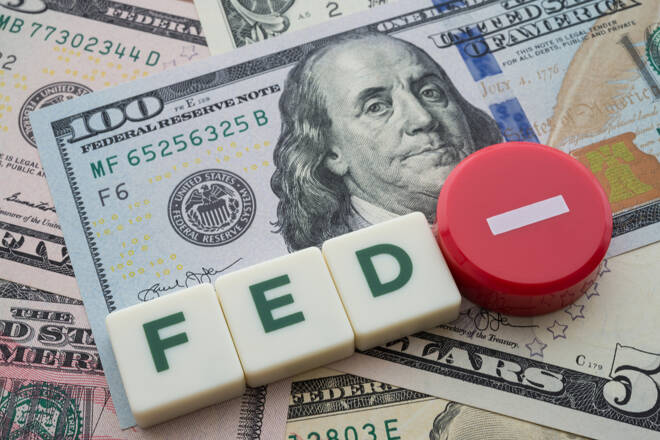Advertisement
Advertisement
US Dollar Index Could Weakens on Soft Monetary Policy Expectations
By:
Slowing consumer spending growth, moderating inflation contribute to uncertain future for US Dollar Index.
Highlights
- US consumer spending growth slows in February
- Fed rate cuts predicted by year end
- Dollar’s yield advantage expected to decline
Overview
On Friday, the US Dollar lost some of its gains against basket of currencies due to the slowing growth of personal consumption expenditures in February.
In February, U.S. consumer spending increased moderately and although inflation cooled, it remained high enough to potentially allow the Federal Reserve to increase interest rates once more this year.
The Commerce Department reported a slowdown in consumer spending in February following a significant increase in January, but consumer spending is expected to improve this quarter after a sluggish performance in the previous quarter. The tight labor market continues to support consumer spending.
At 14:47 GMT, June US Dollar Index futures are trading 102.170, up 0.349 or +0.34%. The Invesco DB US Dollar Index Bullish Fund ETF (UUP) is trading $27.86, up $0.08 or +0.29%.
Dollar’s Yield Advantage Expected to Decline
This has led to expectations of a softer monetary policy from the Federal Reserve, and coupled with the belief that US interest rates are nearing their peak, investors anticipate a decline in the dollar’s yield advantage.
The dollar index is down 1.1% for the quarter, and traders are monitoring the possibility of deposit flight from US regional banks.
US Interest Rate Markets Reprice Outlook, Predict Fed Rate Cuts by Year End
The US interest rate market has shifted with a 40% chance that the Federal Reserve will no longer increase rates, and there are predictions of rate cuts by the end of the year.
The impact on the US dollar remains uncertain, but it could fall further. The banking crisis has affected both credit supply and demand, making it likely that the end of the Fed rate-hiking cycle is approaching. The US dollar remains above long-term average levels.
Meanwhile, US consumer spending increased moderately in February, following a surge the previous month. Inflation showed signs of cooling but remained elevated, leaving room for the Fed to potentially raise interest rates once more this year.
However, the Fed is expected to reverse course quickly and end the year with rates lower than they began, with futures contracts tied to the policy rate predicting this outcome.
Short-Term Outlook
Overall, the sentiment in this passage is bearish for the US dollar.
Slowing personal consumption growth in February, the possibility of Fed rate cuts, and a softer monetary policy are contributing to a decline in the dollar’s yield advantage.
The US interest rate market has already priced in these expectations, which could further weaken the dollar.
Positive indications, such as moderate consumer spending and potentially high enough inflation to allow for one more interest rate increase this year, are overshadowed by the negative sentiment towards the US dollar.
For a look at all of today’s economic events, check out our economic calendar.
About the Author
James Hyerczykauthor
James Hyerczyk is a U.S. based seasoned technical analyst and educator with over 40 years of experience in market analysis and trading, specializing in chart patterns and price movement. He is the author of two books on technical analysis and has a background in both futures and stock markets.
Advertisement
